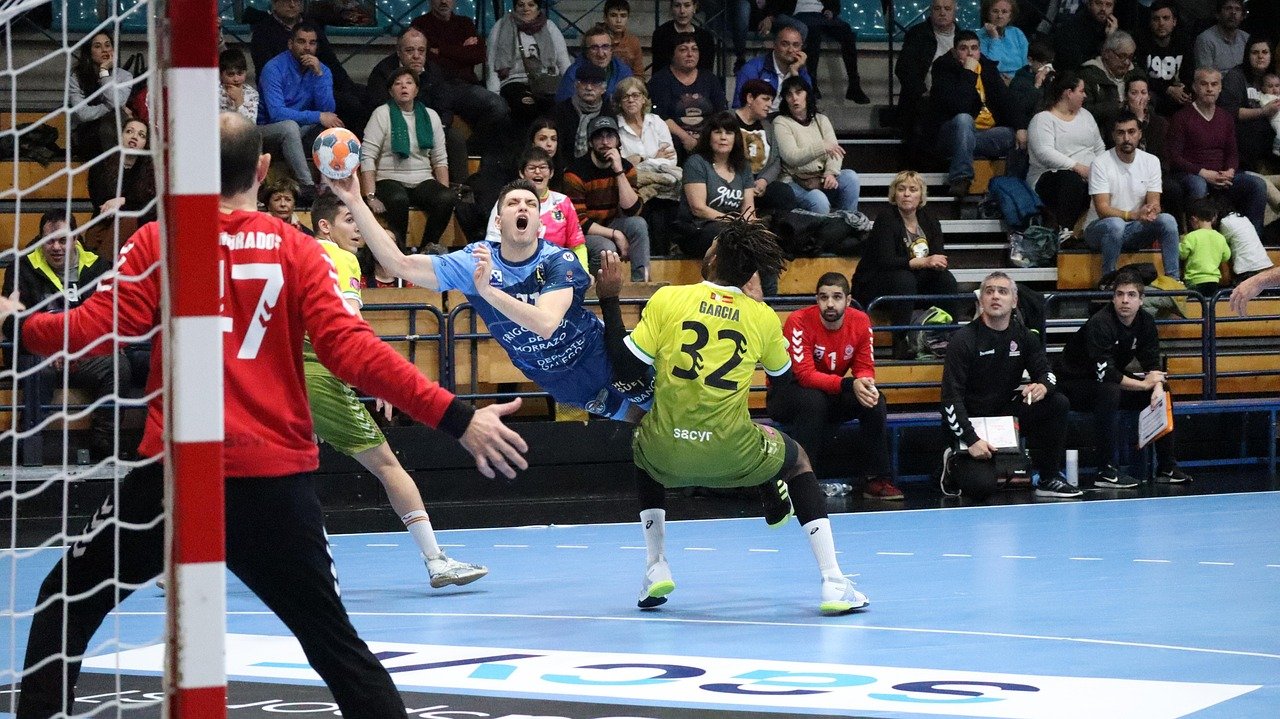Handball is a dynamic, high-paced team sport that combines elements of basketball, football (soccer), and netball. Played widely across Europe and increasingly around the world, handball involves two teams of seven players each trying to score by throwing a ball into the opponent’s goal. If you’re new to the game, this guide will explain everything you need to know to get started.
A Quick Overview of Handball
Handball is played indoors on a 40 by 20-metre court, with goals at either end. Each team consists of six outfield players and one goalkeeper. The aim is to score more goals than the opposition within two 30-minute halves.
The sport is governed by the International Handball Federation (IHF), and it features in major competitions including the European Handball Championship and the Olympic Games.
Key Characteristics of Handball
- Fast-paced with frequent scoring
- Emphasis on teamwork, quick passing, and movement
- Limited physical contact allowed
- Requires stamina, agility, and strategy
The Basic Rules of Handball
To truly understand handball, it’s important to grasp its foundational handball rules:
Starting the Game
The game begins with a throw-off from the centre of the court. The team that wins the coin toss decides whether to start with the ball or choose a side.
Playing the Ball
Players can:
- Hold the ball for up to 3 seconds
- Take up to 3 steps while holding the ball
- Pass, dribble, or shoot to progress
Scoring
A goal is scored when the entire ball crosses the goal line within the goalposts and under the crossbar, provided no rules are broken in the process.
Defence
Defenders may block or intercept passes but cannot make body contact that restricts movement. Excessive or dangerous contact results in fouls.
Fouls and Penalties
Common penalties include:
- Free throws
- 7-metre throws (similar to penalties)
- 2-minute suspensions
- Yellow or red cards for misconduct
Handball Court Layout
Understanding the playing area helps you visualise the flow of the game:
- Goal Area: Only the goalkeeper is allowed in this 6-metre zone.
- 9-Metre Line: Used for taking free throws.
- 7-Metre Line: Marked for penalty throws.
- Halfway Line: Centre point for throw-offs.
Positions in Handball
Each player in handball has a specific role on the court:
- Goalkeeper: Defends the goal.
- Left and Right Wing: Speedy players who attack from the flanks.
- Left and Right Back: Shooters from a distance.
- Centre Back (Playmaker): Directs the attack.
- Pivot (Line Player): Plays near the goal to disrupt defences.
Equipment Needed for Handball
Playing handball doesn’t require a lot of equipment, but the basics include:
- Handball shoes with good grip and ankle support
- A resin-free or resin-compatible ball (size varies by age/gender)
- Comfortable, breathable kit
- Protective gear like knee pads (optional)
Why Handball Is Great for Beginners
Handball is inclusive, fast, and fun. Whether you’re joining a school team, a local club, or just playing recreationally, it’s easy to pick up and encourages fitness and social interaction.
Some benefits include:
- Improved coordination and reflexes
- Team-building and communication skills
- Cardiovascular and muscular endurance
Getting Involved in Handball
If you’re interested in playing:
- Look for a local handball club or sports centre
- Attend beginner sessions or youth leagues
- Watch matches to learn strategies and rules
Many countries have national handball federations that offer coaching, tournaments, and support for new players.
Tips for New Players
- Focus on passing and positioning
- Learn how to shoot effectively
- Understand your role within the team
- Stay disciplined to avoid unnecessary fouls
Final Thoughts
Handball is an accessible, engaging sport that rewards teamwork and athleticism. Whether you’re watching or playing, learning the fundamentals can make the experience more enjoyable and rewarding.
With a basic understanding of the rules, positions, and equipment, you’re now ready to step onto the court or enjoy the game from the sidelines with new appreciation.



